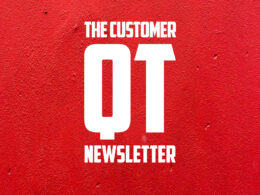In 2019 marketers were catching the wave of brand personalization. I was a strong advocate of it then, and strongly recommended it in my book Relationshipping published in 2020. Several factors slowed down the movement to Brand Personalization. The move to remove cookies pulled players away from personalization to focus on post cookie solutions. CMOs and IT found complicated “big data” issues inside the enterprise which hampered accurate personalization. On top of that COVID caused recessionary cutbacks in personalization investment. Topping this all off, research found that consumer privacy sensitivity to targeted digital messaging was much higher than in offline media, and that further slowed this movement down.
by George Wiedemann
Gartner found in their October 2020 CMO Spend Survey that only 14% of respondents reported brand personalization as a top-three capability. Gartner predicted that one-third of marketers would reduce spending on personalization in 2021. However, while this happened on the business side, consumers continued to connect with brands, and continued to want the brand to know them to customize products and messages to them.
Not finding any current research to support my view about the consumer and personalization, I reached out to Michele Fitzpatrick, Vice President – Strategy, Retail and Consumer Brands at Acxiom. I asked Michele “Is Brand Personalization still a priority?” And she replied: “Yes, personalization should be a priority for any brand – especially given the increase in digital interactions over the past two years. Consumers expect brands to engage with them in a contextually relevant way in real time throughout the buyer journey, across touchpoints, and throughout the customer lifecycle. This is why CDPs are such a big deal. They enable real time decisioning and personalization.”
Granted, this effort still faces headwinds. And Michele advises that there is more to deploying this: “Lots has been published on this by David Raab (CDP Institute) and others.” It’s worth studying because, as you might expect, you cannot just snap your fingers and get a CDP performing optimally.
Where does that leave you with brand personalization? My concern is that if your company continues to delay developing personal relationships with your customers you will fall behind your competitors.
Let’s touch on some basic, key elements needed to enable brand personalization: Data, Privacy Principles, and your Digital Foundation. Execution is the fourth vital element which will be the topic of next week’s article.
Data
We just touched on the CDP for which I am a strong advocate. But today I want to talk about a primary digital data platform that was just launched last month. The digital agency Adworthy.com has launched Augmetrics™ AI. Augmetrics™ AI harvests your 1st-party digital performance data to identify the words and images your customers find most appealing, converting them into custom audiences and inclusive ad targeting models. Your creative team can see in real-time the words and images that work and fix the ones that do not work. The marketing team can see the clusters of customers for whom they are working, and adjust targeting spends. This is a serious competitive tool.
To dive deeper into BIG DATA, almost all of which is produced in the digital engagement platforms, let me refer you to a great report on this subject to be published soon in TheCustomer entitled “2022 Customer Engagement Technology Buyers Guide”. These platforms advance the enterprise personalization capabilities and digital foundation, which there is more on below.
“We are now in a post cookie, new primary data product wave. To do well embracing personalization it is vital to respect consumer privacy.”
Privacy Principles
If your brand offends the customer on the privacy front, you will lose that customer. We have seen the legislation. Europe was out in front of this five years ago with GDPR (General Data Protection Regulation). It sets out seven principles:
- Lawfulness, fairness, and transparency
- Purpose limitation
- Data minimalization
- Accuracy
- Storage limitation
- Integrity and confidentiality (security)
- Accountability
The US lags behind this strict regulation leaving it in the hands of states. California was first enacting its CCPA (California Consumer Privacy Act). You will work with your lawyers in this area, but allow me to, in plain English, put what I call the Relationshipping Promise to the customer:
“If you allow us to use your personal interactions with our brand to serve you better, we promise to give you control of your data on our platform, never to share this data with outside entities without your permission, and to deploy the highest data security measures possible to prevent hacking.”
Adhering to privacy principles to underpin customer loyalty, the next thing needed for Brand Personalization is a strong Digital Foundation for a personalized customer experience (CX).
Digital Foundation
The digital foundation is where your prospective customer lands when digitally responding to your ads and becoming a lead. The Digital Foundation is your website, microsite, landing page, and search result presence (SEO and PPC), and if not managed on your site, the marketing platforms you use.
With the objective to catch all digital responses from outbound touches a client of mine calls the lead capture part of the foundation “the net”. So far in my budget-optimization consulting work, when auditing how outreach efforts are working, there have consistently been holes in the net. The holes result in your leads being grabbed by your competitors.
The objective of these efforts is to provide a targeted, personalized or near-personalized, clear message and call-to-action for which a response results in desired cost per lead, but also a good experience leading to conversion. An easy example of best-practice is to have the link go to a landing page specifically designed to harvest response to that ad’s offer on a path to conversion. A poor practice is to just have the lead go to the home page on the website causing the prospect multiple clicks to get to the product or service. Prospective customers do not have the patience to spend too much time navigating through a website to find what they want. We have all had that experience! So, a good experience lead-capture is the first part of the Digital Foundation.
Much more subtle is what I’ve talked about in previous articles, that a brand’s media brings prospects to search where competitors who are doing a better job will rake some of them off. Search is a key part of your Digital Foundation. Remember, Google reports that 88% of prospects will also look around in response to your ad rather than just travel straight to a purchase. Again, my audits consistently reveal holes in the search net for the brand I’m working for. Either the website pages do poorly in keywords feeding the Google algorithm, so SEO ads fall below the competitors or below the fold, or PPC budgets are inadequate or poorly managed giving the competitors best position to harvest the clicks. If your brand has search holes in the foundation, the engagement budgets will just not perform optimally. Search is key to a solid Digital Foundation.
The good news is that the Martech and Madtech revolution that is still unfolding is enabling better brand personalization. The challenge to brands is to make sure personalization is a good customer experience that also builds the customer base profitably. We will discuss execution next week. We are always open to hearing from you how this is going in your enterprise.
 George Wiedemann is founder and former CEO of Grey Direct, former CEO of Responsys, and former CEO of The DRUM Agency. He is now founder and current CEO of Relationshipping Consulting, focusing on bringing efficiencies to large-scale enterprises through deep budgetary analysis and process alignment. George is also a frequent contributor to TheCustomer.
George Wiedemann is founder and former CEO of Grey Direct, former CEO of Responsys, and former CEO of The DRUM Agency. He is now founder and current CEO of Relationshipping Consulting, focusing on bringing efficiencies to large-scale enterprises through deep budgetary analysis and process alignment. George is also a frequent contributor to TheCustomer.
Photo by Susannah Burleson on Unsplash.














Spot on strategies! Relationshipping should be built in at the first step with any customer. You have identified the tools to make it work throughout the cycle. More than valuable info—it’s essential. Wish more enterprises could see that…
Spot on strategies! Relationshipping should be built in at the first step with any customer. You have identified the tools to make it work throughout the cycle. More than valuable info—it’s essential. Wish more enterprises could see that…